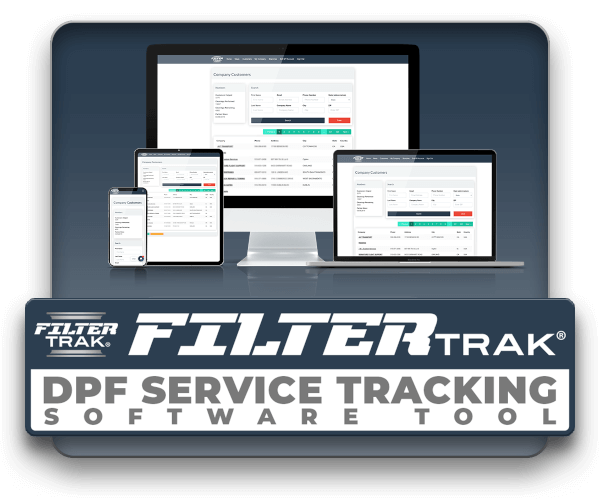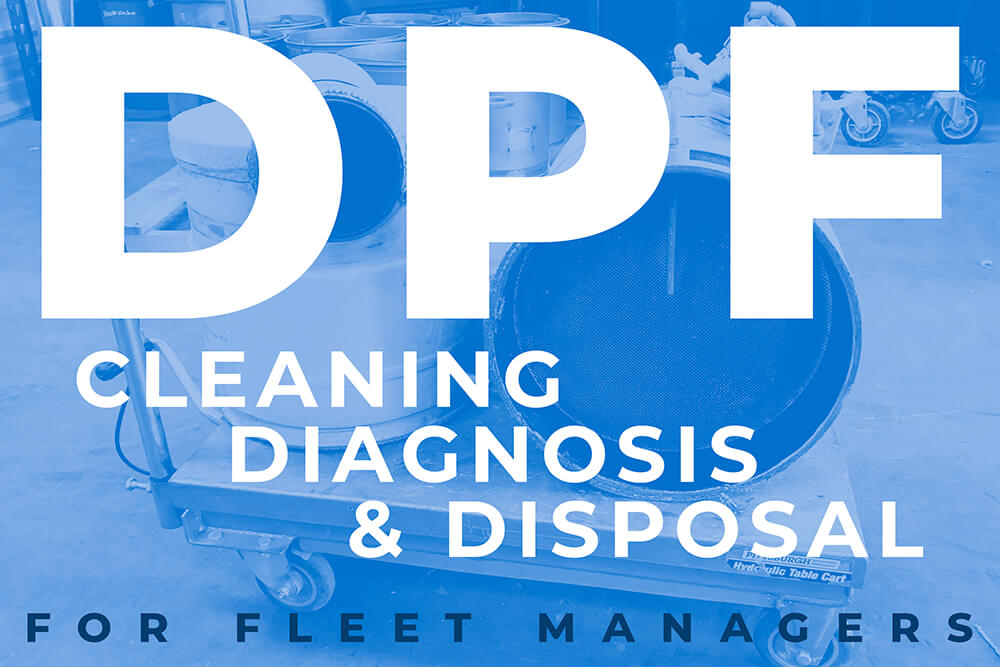
When to Clean Your DPFs
Regular maintenance of the DPF is crucial to prevent costly repairs and keep your fleet operating at peak efficiency. Most truck manufacturers recommend cleaning the filter every 150,000 to 300,000 miles. These numbers are generally overly optimistic and presume ideal operating conditions. The actual cleaning interval of DPFs can vary greatly depending on the driving conditions and the type of diesel fuel used.
Based on years of cleaning thousands of DPFs in our own shops, Filtertherm recommends servicing your DPFs at least once a year or 1,000 engine hours for high idle applications. Removing the ash regularly will help extend the life and performance of your fleet’s aftertreatment systems and engines. If hardened ash builds up in the DPF, it restricts the flow and often causes unnecessary engine issues or even filter failure.
Ultimately, the real-world driving conditions of each vehicle are the crucial factor when determining DPF cleaning for fleet maintenance schedules. Expect that trucks operating in stop-and-go traffic or high idling situations will need DPF cleanings at closer intervals.
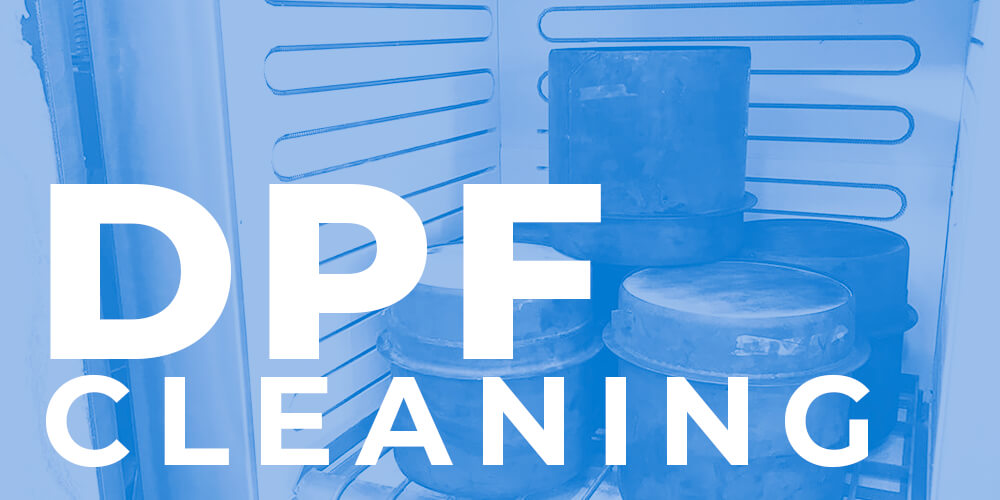
Here are some indications that your trucks’ DPF may require cleaning:
- Increased Frequency of Regeneration: If your trucks are going through regeneration cycles more frequently than usual, it could indicate that the DPF is becoming clogged with soot and needs cleaning.
- Failed Regeneration Cycles: If your trucks’ DPF fails to complete regeneration cycles successfully, it could be an indication of damage or excessive clogging.
- Reduced Fuel Efficiency: A clogged DPF can lead to decreased fuel efficiency, resulting in higher operational costs for your fleet.
- Warning Lights: When the DPF warning light illuminates on your dashboard, it is a clear indication that the DPF needs immediate attention and may require cleaning.
- Engine Performance Issues: A damaged DPF can lead to reduced engine performance, including decreased power output, rough idling, and increased/black exhaust smoke.
Data-Driven Decisions
Leveraging your fleet’s data is vital given the competitive nature of the industry. At this scale every advantage and incremental efficiency improvement pays you back exponentially. DPF Cleaning is no different. Waiting too long between cleanings, not being aware of upstream issues or that a DPF is having issues can have an adverse effect on fuel efficiency, repair costs, and down time. Tracking your DPF cleaning data can help you spot trends or flag problematic filters and remove them from operation.
We have developed a software tool for that. It’s called FilterTrak and every Fitlertherm DPF Cleaning System comes with a free 1-year standard FilterTrak subscription (a $1,200 value).
Diagnosing a Damaged DPF
Early detection of DPF damage is vital to avoid expensive repairs or replacements. Here are some signs that often indicate a damaged DPF:
- Excessive Soot or Ash Accumulation: During regular inspections, look for excessive soot or ash accumulation in the DPF. A severely clogged filter may be damaged and require replacement.
- Aftertreatment Codes: Train your drivers to not ignore dash light warnings.
- Engine Performance Issues: A damaged DPF can lead to reduced engine performance, including decreased power output, rough idling, and increased exhaust smoke.
- Failed Regeneration Cycles: If your trucks’ DPF fails to complete regeneration cycles successfully, it could be an indication of damage or excessive clogging.
- Unusual Noises: Uncommon rattling or knocking sounds from the DPF area could signal internal damage or loose components.
If you suspect a damaged DPF, it’s crucial to inspect the filter promptly.
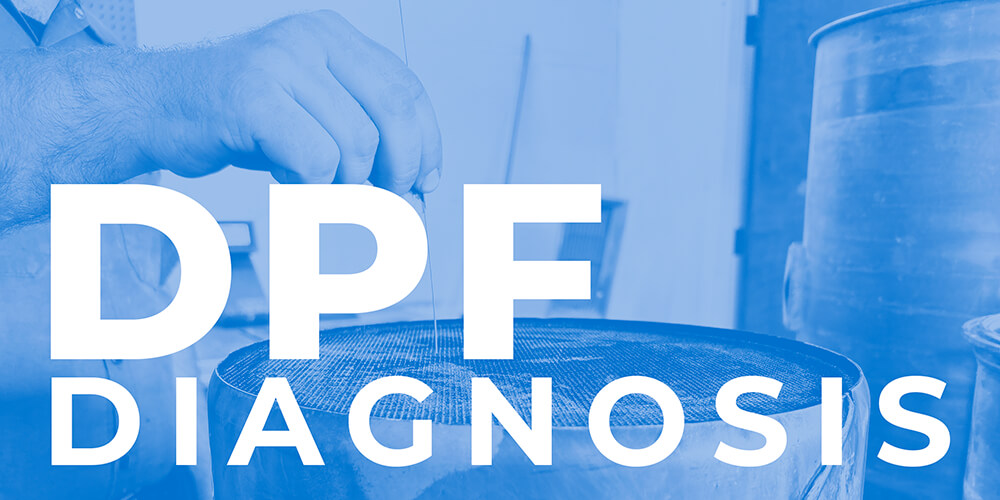
How to Inspect a DPF for Damage
Have your technicians follow these inspection procedures whenever a DPF comes off a truck for cleaning or otherwise.
- Visual Inspection: Look for cracks, holes, or other damage to the filter brick.
- Wire/Pin Test: Perform a wire/pin test before and after cleaning. If the DPF has hardened areas after cleaning, it may need additional cleanings or replacement if the ash is too compacted.
- Heat Damage? Check the DPF for signs of extreme heat damage such as scorching or melting. If the DPF has experienced an extreme heat event, it is likely damaged beyond repair.
- Dirty Outlet? Check the outlet side of the DPF for soot. This indicates DPF is compromised and should be replaced.
- Fluids Present? See if there are any engine fluids such as oil, fuel, or coolant on the filter.
Use the Right Tool for the Job
The Filtertherm Inspection Table is designed specifically for this stage of the process.
You can weigh and flow test your DPFs for benchmarking before and after cleanings. It even has a built-in high-intensity light that shines up through the filter for crack detection and a convenient built-in holder for pin test wires.
Proper Disposal of Damaged DPFs
When a DPF reaches the end of its service life or is irreparably damaged, proper disposal is critical to ensure environmental responsibility. DPFs contain hazardous materials, so they should not be thrown away in the trash/regular recycling. Follow these steps to dispose of damaged DPFs responsibly:
- Compliance with Local Regulations: Ensure that you comply with all local, state, and federal regulations regarding the disposal of hazardous waste. DPFs are considered hazardous due to the presence of heavy metals.
- Engage Authorized Recyclers: Contact authorized DPF recycling facilities that can safely handle and process damaged filters. These facilities can extract valuable metals and dispose of the remaining components responsibly.
- Document Disposal: Keep detailed records of the disposal process, including the date, disposal facility information, and any relevant paperwork, as part of your fleet’s environmental compliance efforts.

“Who you gonna call?”
We recommend contacting Red Fox Resources and asking about a Fox Box or their other flexible recycling options. They will even pay you for your accumulated, unusable DPFs, and DOCs.
Red Fox Resources handles all the logistics of shipping parts from your location to their facility. They arrange for truckload, LTL, or express shipments. They even pay shipping costs for collection partners.
Contact Red Fox Resources for more information.
Find the right DPF Cleaning solution for your FLEET.
Give us a call. Get Answers.
Use our ROI tool to see how quickly this investment can save your fleet time and money.
Schedule a meeting with Wayne Cochrane, our National Sales Manager.

